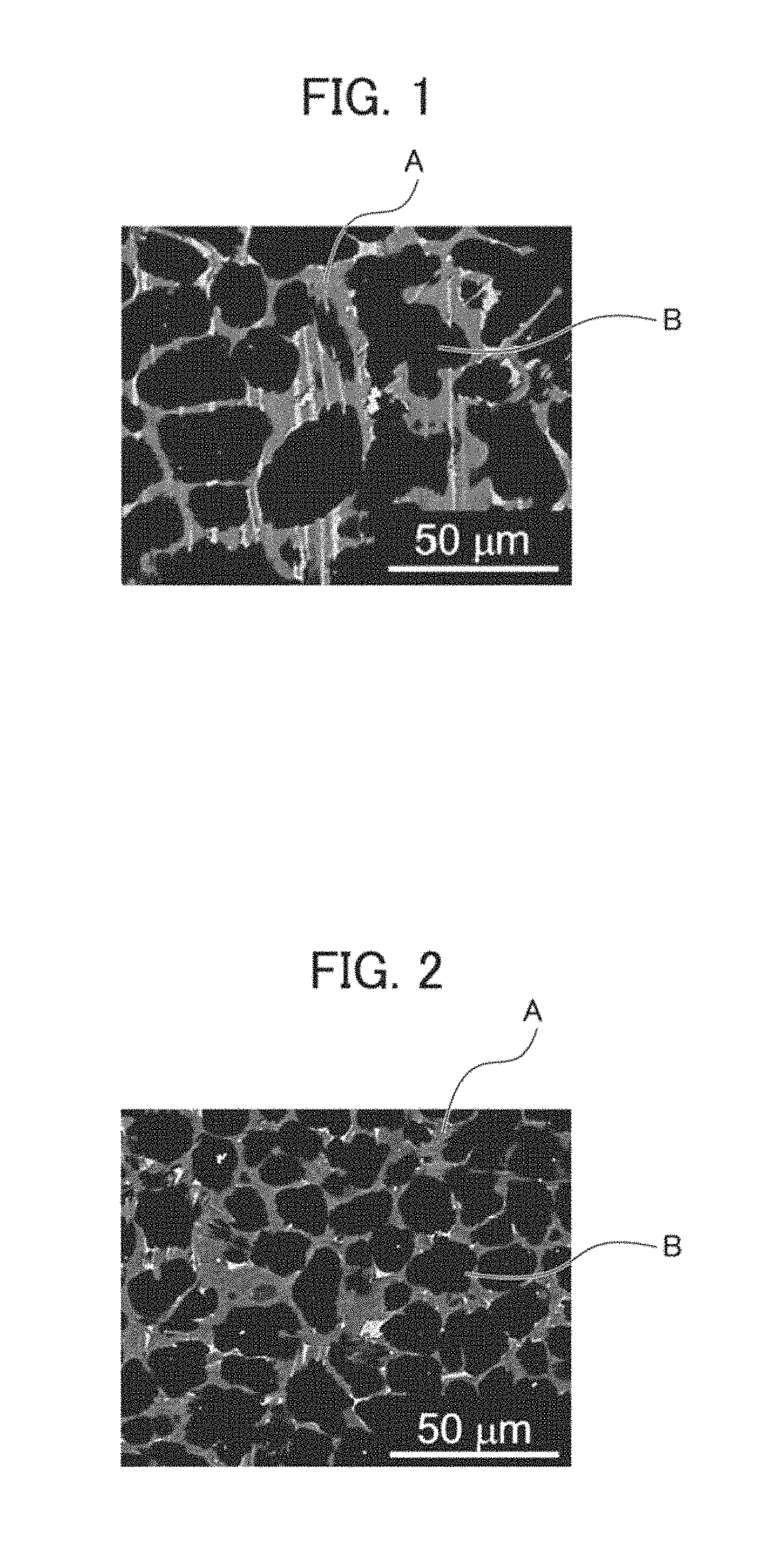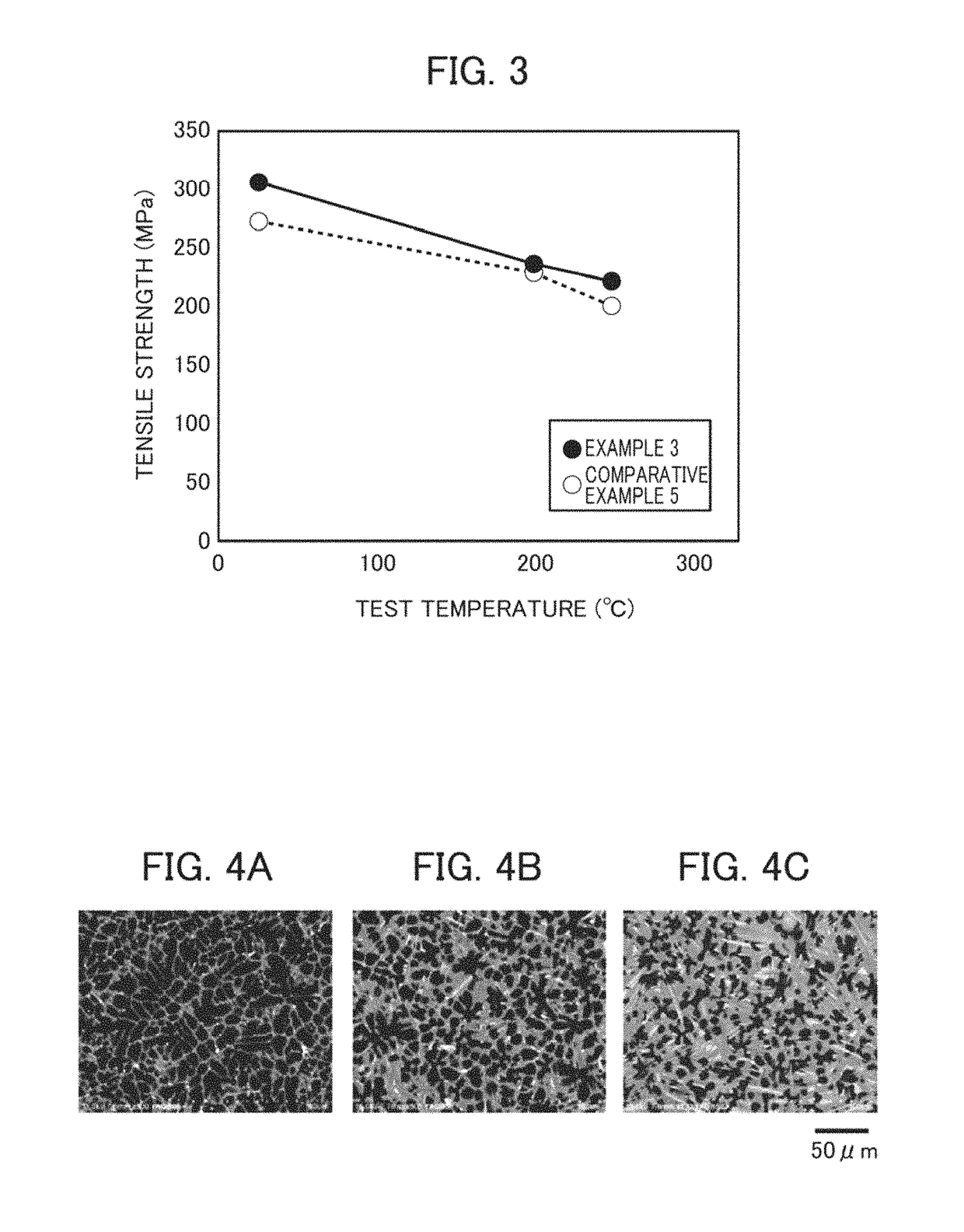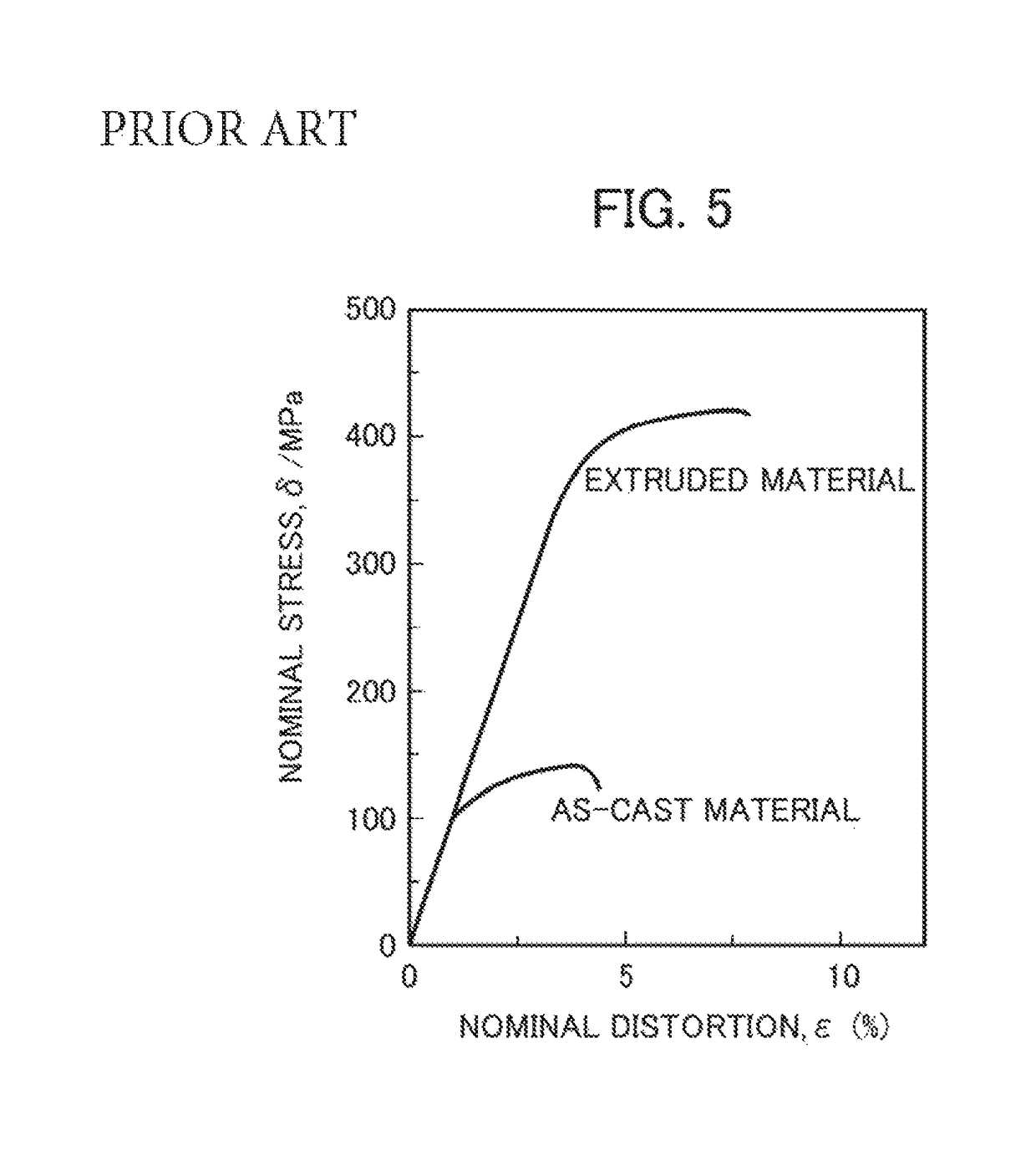Magnesium casting alloy and method of manufacturing same
a technology of magnesium casting alloy and magnesium alloy, which is applied in the field of magnesium casting alloy, can solve the problems excessively increasing the component, and insufficient conventional magnesium alloy, and achieves the effects of reducing the mechanical strength of the component, reducing the weight of the component, and satisfying mechanical properties and thermal conductivity
- Summary
- Abstract
- Description
- Claims
- Application Information
AI Technical Summary
Benefits of technology
Problems solved by technology
Method used
Image
Examples
example 1
[0072]A metal material obtained by adding, to Mg, 2 atomic % of Zn and 2 atomic % of Y was inserted into a graphite crucible, high-frequency induction melting was performed in an atmosphere of Ar and the metal material was melted at a temperature of 750 to 850° C. The molten alloy obtained was injected into a mold and was cast. At the time of the casting, the molten metal material was cooled. The size of the plate-shaped cast alloy obtained by the casting was 50 ram in width and 8 mm in thickness. When an Al—Cu eutectic alloy in which a relationship between a cooling rate and a dendrite secondary arm space was known was cast under the same conditions as in the example of the present application, and the cooling rate was analogized from the secondary arm space, the cooling rate was 55K / second.
example 2-7
, Comparative Example 1-7
[0073]Except that the composition was changed according to table 1, the melting and the casting were performed as in example 1, and thus magnesium alloys were manufactured. In comparative examples 5 to 7, literature values were used, and the composition ratios were as follows.
PUM
| Property | Measurement | Unit |
|---|---|---|
| tensile strength | aaaaa | aaaaa |
| thermal conductivity | aaaaa | aaaaa |
| specific gravity | aaaaa | aaaaa |
Abstract
Description
Claims
Application Information
 Login to View More
Login to View More - R&D
- Intellectual Property
- Life Sciences
- Materials
- Tech Scout
- Unparalleled Data Quality
- Higher Quality Content
- 60% Fewer Hallucinations
Browse by: Latest US Patents, China's latest patents, Technical Efficacy Thesaurus, Application Domain, Technology Topic, Popular Technical Reports.
© 2025 PatSnap. All rights reserved.Legal|Privacy policy|Modern Slavery Act Transparency Statement|Sitemap|About US| Contact US: help@patsnap.com



